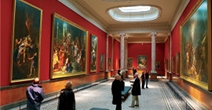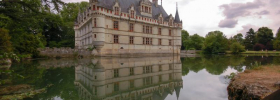 Home
Home- > Tours
- > Nord-Pas-de-Calais
- > Pas-de-Calais
- > Bethune
- > Visit the beautiful city, béthune
Visit the beautiful city, béthune
| Topic | Sciences and discovery |
| Departure | BETHUNE (62) |
| Details | Béthune is a pleasant and rich city by its architectural heritage and its history. It has inter alia a superb still paved place, around which the trade and coffees give life to the city |
A tour of the city
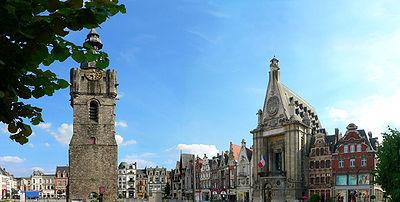
Béthune is a pleasant and rich city by its architectural heritage and its history. It has inter alia a superb still paved place, around which the trade and coffees give life to the city.
In the center, proudly draws up the belfry like still taking care on the inhabitants (height 47 m, 133 steps). Its inimitable chime is composed of thirty-six bells.
The city also has a museum devoted to the ethnology of regional vocation; the cultural establishment, since nearly twenty years, is accessible to public exclusively in period of the temporary exhibition, it is thus impossible to discover the least permanent exposure, which is absurd for a city with last also prestigious.
Accommodation nearby
The Belfry of Béthune
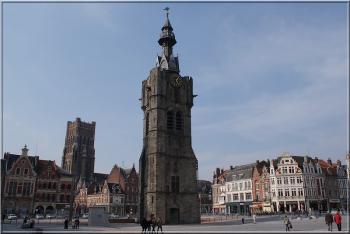
Symbol of the medieval and contemporary History of Béthune, the Belfry overhangs the city. Located on the Town square, it is the center geographical, political, historical, cultural and emotional of the city.
Among its many functions, it is necessary to point out that which reviews ideal observation of it to scan the surrounding countryside and to prevent danger.
The belfry of Béthune also incarnates in the name of the history the communal franknesses from the city, these usual freedoms granted the middle-class men by the counts of Artois.
It is the symbol of North - Pas-de-Calais: the silhouette of the belfry béthunois was indeed chosen by the General advice to be used as logo with the Area.
Accommodation nearby
Grand'Place and its cellars

Destroyed to 90% in 1918, the downtown area is rebuilt between 1919 and 1929 by a group of architects directed by L.M. Cordonnier. Eclecticism, Art Déco, néo-regionalism make a unit heteroclite. In the Middle Ages, the market échevinale held even role and place that the current town hall.
Rebuilt on several occasions, the current town hall is drawn by the architect J. Alleman. Built from 1924 to 1929, the building dissociates other dwellings by its massive form. Its frontage summarizes the titles and glories of the city: the Military Cross and the Legion of Honor as well as the weapons of the city.
The Town hall is classified Historic building since April 2002. Certain frontages of the place, representative of the style Art déco are also registered with the Historic buildings.
Accommodation nearby
Discover the Saint-Vaast church and its organ
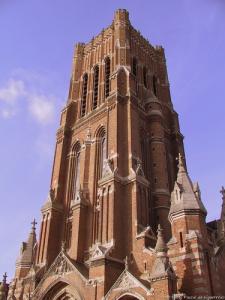
On the ordinance of Charles Quint, the church, built in the beginning on the site of the current Pasteur place, is set up intramurally in 1547.
Completely destroyed in 1918, the church is rebuilt by L.M. Cordonnier of 1924 to 1927. Using of all the materials (bricks, mosaics, stained glasses), Cordonnier takes as a starting point the Byzantine art, art déco to make an interior cordial and clear.
The statues of Réal del Sarte, a triptych signed Ducourant enrich the unit.
The stained glasses, registered voters M.H., recall the history of Saint-Vaast and use of anachronisms to evoke the modern history of the city.
The organ case of German invoice is a specimen unique in France.
Accommodation nearby
The Saint-Ignace tower
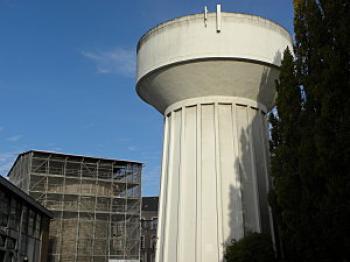
Registered in the inventory of the Historic buildings since 1969, this artillery tower of XV century is one of the rare vestiges of the fortifications of the city with the Saint-Pry bastion.
This tower knew many functions: refrigerator, store with powder, water vault and tower. Its name of Saint-Ignace is resulting from his position near the old College of the Jesuits, order created by Ignace de Loyola.
Accommodation nearby
Latest news on : Visit the beautiful city, Béthune
Tourism near
 Visit the city of Bethune
Visit the city of Bethune - 5 Museum
- 5 Monuments
Tours
 Côte d'Opale visit
Côte d'Opale visit
 Discover Aire-sur-la-Lys
Discover Aire-sur-la-Lys
 Armentières
Armentières






















